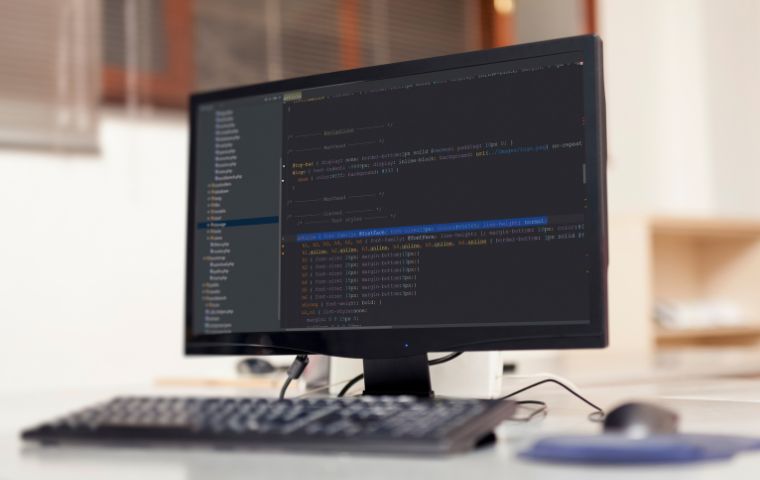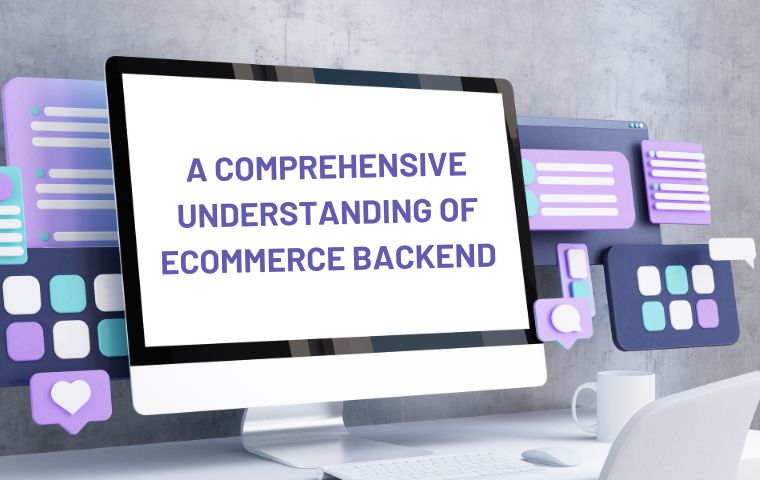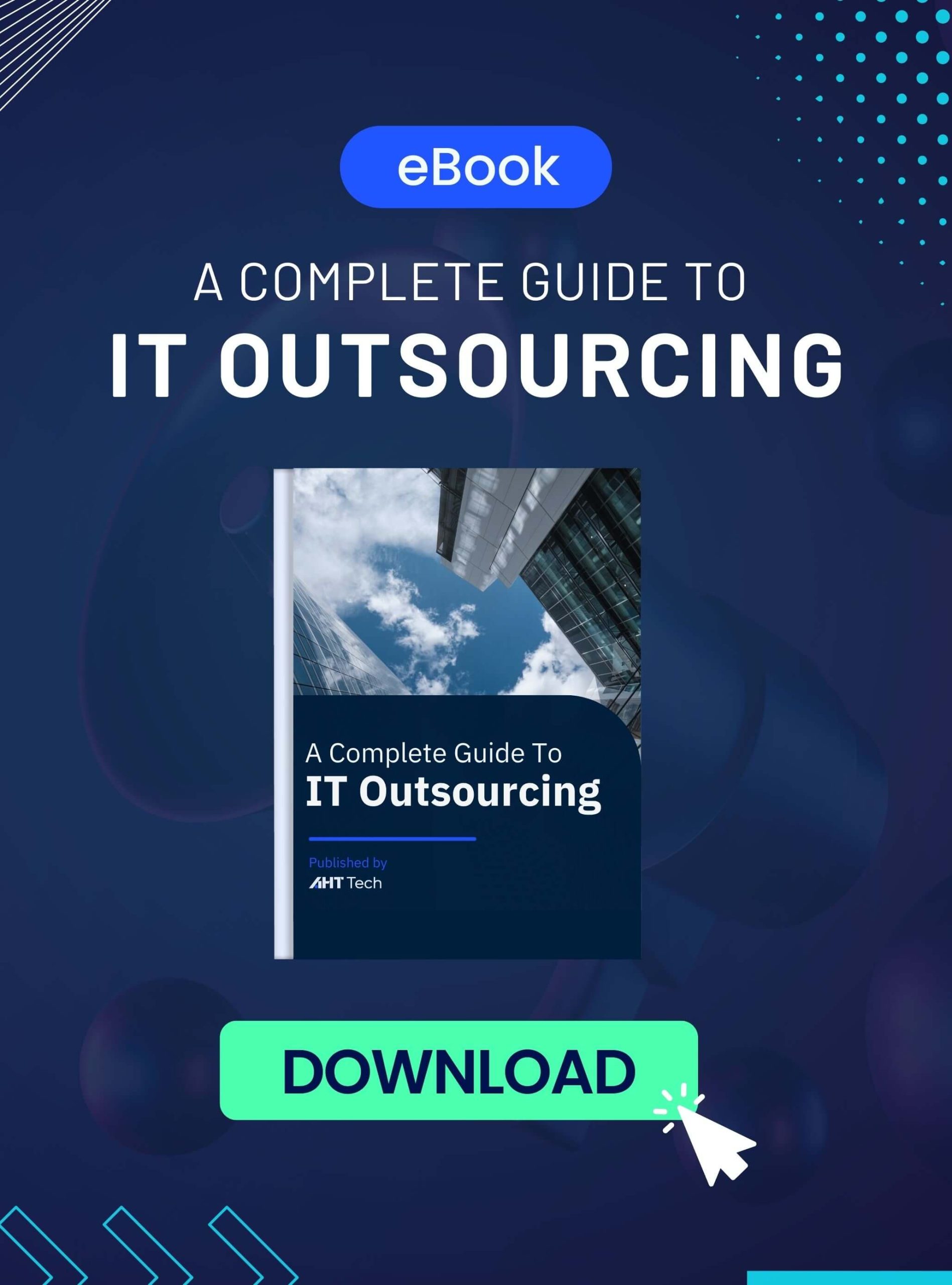TABLE OF CONTENT
What is an eCommerce backend?
Key Elements of an eCommerce Backend
What is the best eCommerce backend language?
Conclusion
What is an eCommerce backend?

If the front-end is the first thing that online shoppers see and interact with, such as images, sounds, product detail pages, etc., then the eCommerce backend is the structure that users cannot see. It is responsible for processing, storing, and transmitting data to and from the customer, involving the technology and processes in eCommerce development that support the user interface as well as other systems that operate in the background. The eCommerce backend can also be considered as the engine of a website to ensure the website can operate smoothly and effectively to meet customer needs. However, your eCommerce website just runs smoothly if it has powerful both eCommerce front-end development and back-end.
Key Elements of an eCommerce Backend
eCommerce backend architecture is highly complex, which affects to control of most parts of your business. Certainly, each company size and specific-industry will have typical eCommerce. Here are several components of an eCommerce backend, including:

Inventory management
To ensure that your eCommerce website always updates accurately the number of stocks, the eCommerce backend will tend to connect directly with the front end. In more detail, your online store will show the right product number which is sitting in warehouses ready to ship. There is no doubt that customers will leave if ordering but out of stock. Therefore, the connection between the eCommerce backend and the front end helps businesses keep customers.
Order processing
You can choose to integrate an eCommerce website with a specific system to manage order processing. It is complicated for you to ensure a seamless delivery. However, if you build a powerful eCommerce backend with a third-party system, you will easily take an order and route it through logistics. It will design and estimate the right time for this order at the location, which will give customers trust and peace of mind.
Shipping and fulfillment
Generally, the process from ordering to delivering products tends to take human error, leading to being late. It also makes your business pain in managing human resources and investment. Thus, building an eCommerce backend has an automated solution that will eliminate manual errors and repetitive tasks. Moreover, it is the best way to optimize resources and prices in operating and ordering.
Content Management System (CMS)
CMS plays a vital role in managing content which present on the eCommerce website. eCommerce backend developers will build and design intuitive CMS and ensure that it adapts to SEO standards. It affects the ranks in search engines as well as the presence of eCommerce websites in Google. WordPress is a prime CMS platform which pre-built templates and tutorials to ease web development or developing an eCommerce app. Of course, the eCommerce backend will affect the show of the front end. It is flexible for you to design and customize the front-end eCommerce website if required. Noted that customer experience profound impacts to the performance of your website.
What is the best eCommerce backend language?

Java
Java stands out as one of the most widely used programming languages. It is a sophisticated object-oriented language known for its exceptional performance and security features. Java enables users to develop user-friendly and dependable e-commerce platforms effortlessly. A key advantage of Java is its capability to operate on various platforms, irrespective of the user’s computer setup. Many developers leverage Java to construct efficient e-commerce websites that are compatible with multiple browsers, facilitating cross-platform functionality. This server-side language is particularly beneficial for the development of extensive projects, ultimately leading to time and cost savings for users.
JavaScript
JavaScript is widely recognized as the top programming language for e-commerce websites on a global scale. This language is known for its simplicity, flexibility, and scalability, which enhances the functionality of websites. With support from most web browsers, developers do not have to switch between multiple languages for different platforms. JavaScript is a preferred option for developers as it can be utilized for both front-end and back-end development. Moreover, it offers a wide range of modules and libraries that users can leverage to incorporate any desired feature. You can improve user interaction by using JavaScript to apply client-side scripts. Additionally, JavaScript enables the modification of data display, facilitates asynchronous communication, and allows for the control of browser functions. Its utility extends to server-side network programming, making it an excellent choice for building e-commerce stores.
PHP
If you are still searching for the perfect programming language for your e-commerce website, PHP should definitely be on your list. Renowned for its efficiency, PHP allows you to create a powerful and scalable website for your business.
Not only is PHP easy to learn, but it also offers easy integration with other programming languages, making it a great choice for e-commerce. Additionally, PHP provides cross-platform compatibility and access to a massive community of support, ensuring a robust e-commerce store.
Python
Python, being the top programming language globally (according to PYPL), is an excellent option for e-commerce development. Its emphasis on efficiency and extensibility, along with its numerous libraries such as Pandas, NumPy, Matplotlib, and SciPy, its machine learning capabilities, and its compatibility with databases, make it an exceptional choice for implementing artificial intelligence, scientific and engineering computing, as well as constructing intricate and large-scale e-commerce websites.
Python proves to be an outstanding selection as it enables the creation of dynamic, user-friendly, and highly intuitive e-commerce stores without the need for advanced coding or programming skills. Moreover, Python offers developers a clear and easily comprehensible syntax.
C++
Most people consider C++ to be the most complicated programming language to learn. However, it is one of the top programming languages for e-commerce as it supports most of the backend languages. C++ is a low-level language and has many syntax options that ensure easy scalability, security, and flexibility.
This programming language effectively handles many complex problems and advanced functions such as direct memory access, enumerated value types, etc. Additionally, developers find C++ beneficial for analyzing and understanding online consumer data, providing scalability and a user-friendly interface.
Conclusion
Not only is frontend development required, but the eCommerce backend architecture is crucial to the success of any eCommerce website, touching almost every part of the business. From security and data management to order fulfillment and payment processing, your backend is the foundation on which the rest of your website thrives. When building the eCommerce backend, you need to be very careful because you don’t want to go back and make changes that could adversely affect your larger system. AHT Tech provides eCommerce backend development services with talented developers to build robust eCommerce websites for customers of all company sizes and industries. Get in touch today!



